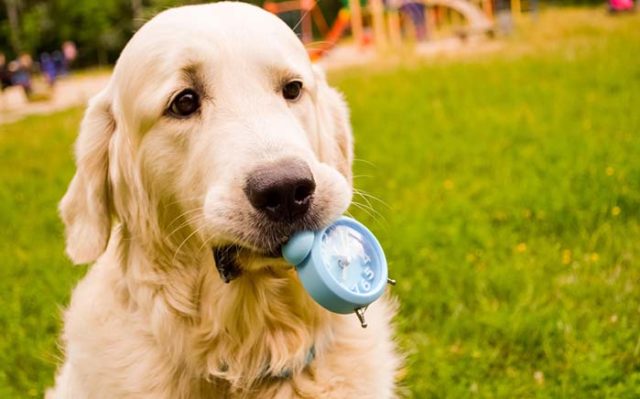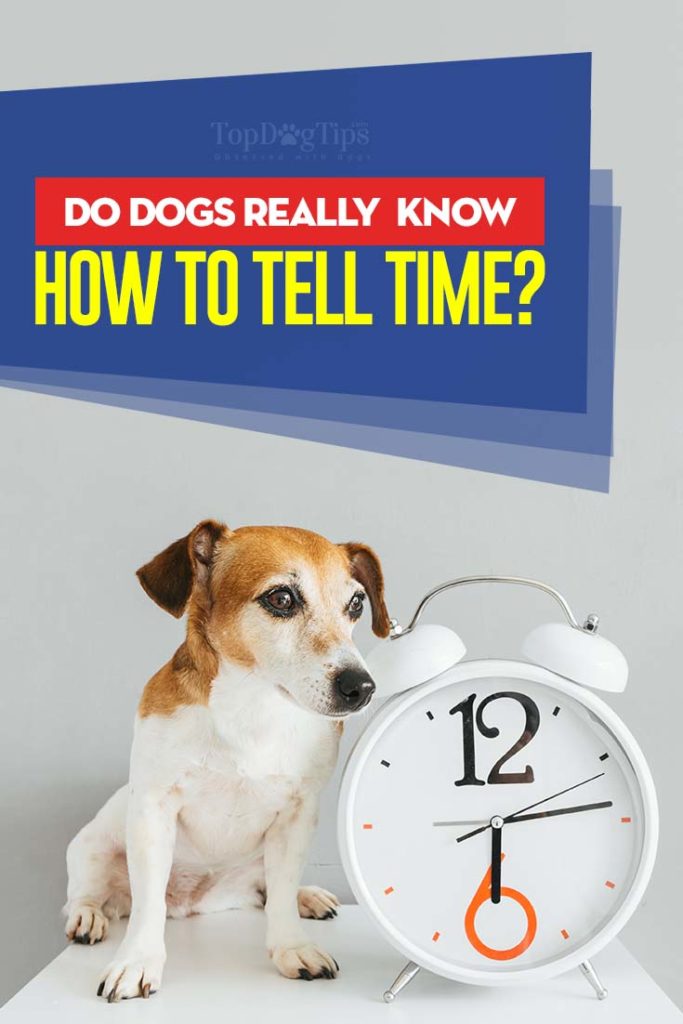
Though they cannot read numbers or understand how the clock works, dogs have the amazing gift of telling time almost accurately.
We see our dogs missing us when we're away; they communicate to us at certain times of the day, and so we all wonder — do dogs have the ability to tell time? While they literally cannot read what's on the clock and differentiate the hours and minutes, it seems dogs are always aware of when it's time to eat or go for a walk.
“According to the results of this study, the effect of time left alone was shown by a more intense greeting behaviour by the dog towards their owner as well as by a higher frequency of physical activity and attentive behaviour when the owner returned.”
Why do dogs know when to wait for their owners by the door during evenings after work? How come they can anticipate the mailman coming at certain times of the day?
Like most mammals, dogs rely on their circadian clock. It determines the physical, biological and mental changes that happen in the dog's body within a 24-hour cycle. It also helps mammals to respond to the light and dark changes in the environment. In many cases, the social and temperature cues also impact the circadian rhythm.
Just like in humans, the circadian clock helps dogs determine when it's time to wake up, feel hungry and go to sleep. Only, human habits or activities differ from dogs, hence we can easily lose track of time or go off schedule. Canines, on the other hand, have more flexible circadian rhythms, so they can quickly wake up and enthusiastically go for a walk, even if they have just had a deep slumber.
RELATED: Study Shows How Dogs Can Sense Shapes and Sizes of Objects
Recognizing Patterns
Experts said that there's more to a dog's ability to tell time than just the circadian rhythm, however. In 2011, Swedish scientists did an experiment to determine how dogs can differentiate the length of time and their findings were published in the Applied Animal Behaviour Science.
In the study, researchers used a hidden camera to catch the reactions of the dogs when their owners left and returned home. The experts wanted to link the dogs' reactions to how long their owners were gone. The humans were asked to “return” at different intervals — 30 minutes, two hours and four hours.
The experts noticed more excitement from the dogs when their owners returned after two hours compared to 30 minutes. However, there were no significant differences in their reactions whether their owners returned after two hours or four hours.
The experiment showed that dogs could understand the passing of time through patterns. It also showed that they are good at paying attention to what's around them in order to determine the behavioral, environmental or social cues.
Using Their Other Senses
Some experts also suggested that dogs are able to associate their activities with their daily events. For instance, they can tell that it's time for breakfast when they see the sun peeking through the window and they also see their owners preparing their food.
 However, some believe that dogs use their strong senses to determine the patterns around them. So, if they know you are arriving home in a few minutes, it could be because they can pick up the very particular sound of your car from the corner of the street.
However, some believe that dogs use their strong senses to determine the patterns around them. So, if they know you are arriving home in a few minutes, it could be because they can pick up the very particular sound of your car from the corner of the street.
Your scent also leaves big cues that help the dogs tell when you’re coming home, especially if you follow a fairly regular schedule. Based on the intensity, faintness or concentration of your scent, your dog can figure out nearly the exact time when you’re going to pop at the door.
Dogs also use their noses to differentiate different times of the day. The smell of the house changes when time moves from morning to evening based on what’s around the air, studies show. This skill is also how dogs are able to tell when a thunderstorm is arriving. Apparently, dogs can detect the differences in the odor and temperature in the air, so they manifest odd behaviors minutes before the rain clouds pour.
READ NEXT: 13 Things Dogs Can Sense About You
Pin and share with other dog owners:













